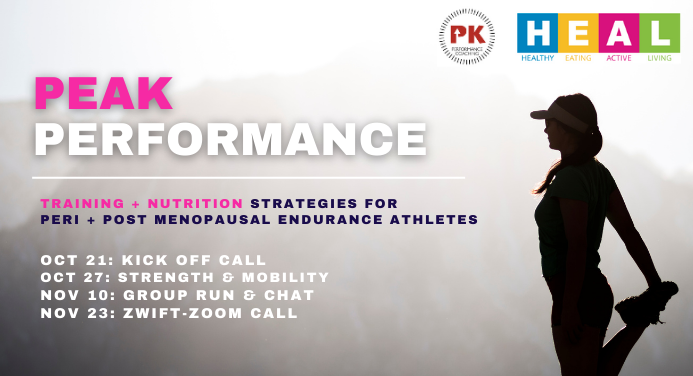
Spice up your diet in 2011
February 6, 2011
Success Story – Carola Meloff
March 2, 2011February was Heart Health Month. In keeping with the theme my this article was published in the Can-Fit-Pro consumer newsletter.
Love Your Heart and Keep on Living!
The cardiovascular system is one of the body’s most important systems in the human body. It pumps oxygen and other nutrients throughout the body in each of its 100,000 daily beats.
According to the Heart and Stroke foundation, every 7 minutes some dies from heart disease or stroke in Canada. Based on 2006 Statistics Canada data, heart disease and stroke are two of the three leading causes of death.
We all know that exercise, in particular cardiovascular exercise is a great way to stay in shape and keep your heart healthy. But do you know that the foods we eat, and don’t eat can also have a profound influence on heart health. Increasing your antioxidants and your Omega-3s are two ways to show your heart you care.
Increase Antioxidants!
One of the risk factors for heart disease is having a low antioxidant status. Think of antioxidants as protectors that scavenge the body battling damage-causing free-radicals. We get antioxidants from the foods we consume, mostly through fresh fruits and vegetables. Health Canada recommends that adults get 7-10 servings of fruits and vegetables each day to stay healthy, and active individuals might require even more. Don’t feel overwhelmed by those numbers. It’s easy to achieve these amounts if you make a point of including at least 2 vegetable or fruit at each meal and one with each snack. One serving is equal to 1 cup of green leafy vegetables, ½ cup vegetables, ½ cup juice or 1 cup fruit.
There are many types antioxidants, including certain vitamins, minerals, phytonutrients and other accessory nutrients.
The Vitamins
Vitamin E can assist in the battle against heart disease because of its ability to protect tissues from free-radical damage causing LDL cholesterol (bad cholesterol). Foods rich in Vitamin E include spinach, nuts and vegetable oils, avocado, blueberries, cranberries, papaya, parsnip, Swiss chard, though supplementation may be required to reach therapeutic levels.
Vitamin C has been shown in studies to be effective in reducing the risk of death from heart attack and stroke. Vitamin C works along side of vitamin A and E as an antioxidant to activate other antioxidant compounds. Foods rich in Vitamin C include tomatoes, citrus fruits, sweet peppers, strawberries, and dark green leafy greens such as spinach, kale and watercress.
The Minerals
Selenium works along side of vitamin E in preventing free-radical damage. Low levels of selenium in the body have been shown to increase risk for cardiovascular disease. Selenium is found in whole grains, wheat germ, Brazil nuts, eggs, Swiss chard and meats.
The Phytonutrients
Flavanoids are a group of antioxidant plant pigments that fight against a broader range of oxidants than the Vitamin ACEs. It is recommended to eat a “rainbow” of fruits and vegetables to increase the spectrum of flavanoids. Each colour group offer a different level of protection. Citrus bioflavanoids, those found in oranges, grapefruits, limes, and lemons appear to be helpful with blood circulation and capillary strength. Where as the blue and purple pigments found in blueberries and grapes improve the integrity of small blood vessels. Other flavanoids are found in foods such as chocolate, red wine and green tea and studies suggest that they offer protection against heart disease.
Carotenes are another group of antioxidant plant pigments found in high levels in brightly coloured fruits and vegetables ranging from red to violet hues. Some carotenes are converted to vitamin A, the most common being beta-carotene, but also including alpha and gamma-carotene. Others such as lutein, lycopene and zeaxanthin are not converted to vitamin A, but also have a very high antioxidant levels. Carotenes have been shown to play a role in the prevention of heart disease. It is recommended to get a variety of carotenes, not just beta-carotene, so eat a variety of foods including: dark green vegetables, carrots, sweet potatoes, mangos, cantaloupe, pink-grapefruit, papaya, paprika, tomatoes, corn, red and yellow peppers.
Increase Omega-3!
Another risk factor for heart disease is a low level of Essential Fatty Acids or EFAs. EFAs specifically Omega-3s are another important nutrient to include in the diet. Studies have shown that populations who consume a high level of Omega-3s in their diet have a lower incidence of heart disease. Omega-3 oils such as cold-water fish oils and flax seed oils offer a protective benefit to your heart and other body tissues. In addition to increasing your Omega-3 intake, it is recommended to eliminate trans-fatty acids containing foods, as well as reduce your intake of foods containing saturated fats.
Remember, that the major risk factors for cardiovascular disease include: smoking, elevated blood cholesterol, high blood pressure, diabetes, and physical inactivity. However, dietary changes to increase antioxidant levels, and essential fatty acids levels in the body will help improve your heart health, as well as your overall health.
Tara Postnikoff is a Registered Nutritional Consultant and a Personal Training Specialist in Toronto. Tara is the owner of Healthy Eating Active Living and can be reached by email at Tara@heal-nutrition.com. For more nutrition tips visit: www.heal-nutrition.com


